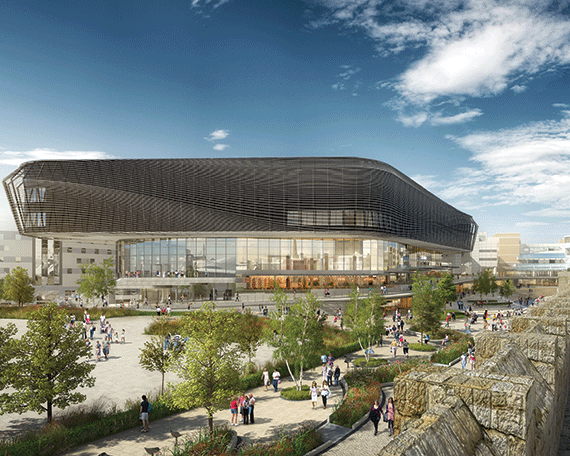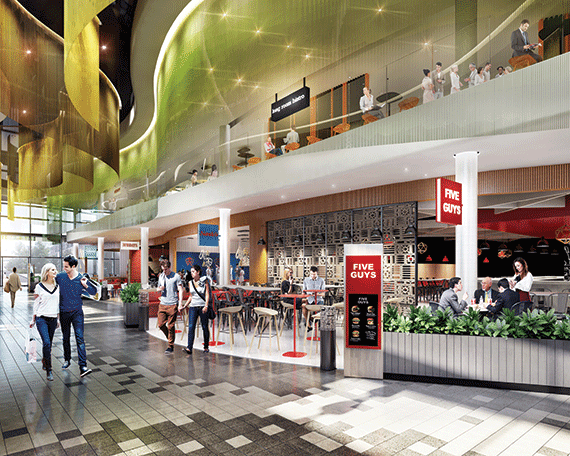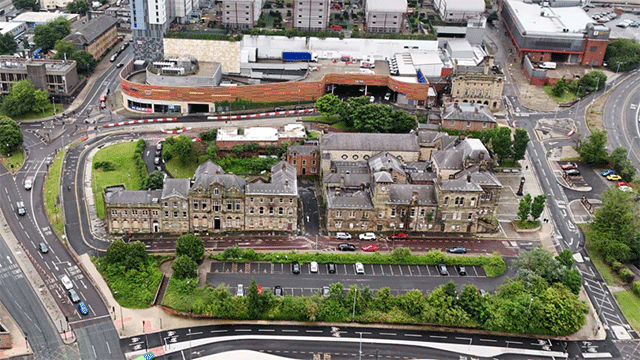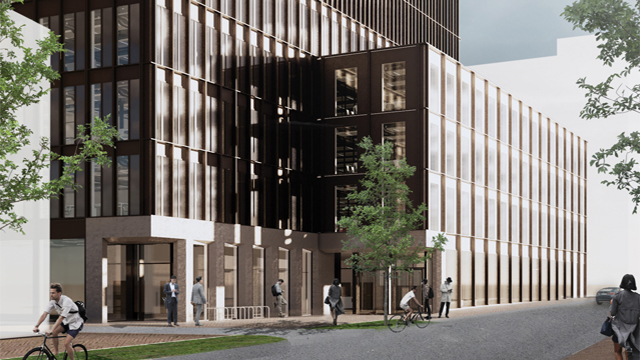Southampton has never been renowned for its restaurant offer and has historically failed to attract the range and quality of operators found in more affluent Hampshire hotspots.
Now new development opportunities are finally providing appropriate space, helping to boost the city’s appeal to expansion-hungry occupiers.
Graham Holland, head of South Coast at Lambert Smith Hampton, says: “I have always moaned over the years that Southampton is a culinary desert.”
He adds: “There has been a serious lack of decent dining. That has largely been down to demographics – Southampton isn’t Winchester. Yet perceptions are changing and over the next six months we’ll see a number of new A3 operators.”
Many of these new arrivals have been drawn to Hammerson’s £80m leisure scheme, WestQuay Watermark. It is one of Southampton City Council’s seven VIP projects mapped out in its city centre masterplan that are forecast to benefit from £3bn of investment by 2030.
It will provide a leisure extension to Hammerson’s jointly owned WestQuay shopping centre. Once complete in February, Watermark will deliver a 10-screen Showcase Cinema de Luxe, Hollywood Bowl, 25 restaurants, cafés and restaurants and a new public plaza.
Restaurant operators already signed up include Five Guys, Byron, Wahaca, Bill’s and COSMO. The majority will be making their debut in Southampton, with some opening their first unit outside London.
Hammerson development manager Guy Wells says: “By income, we are 93% let. We did a lot of market analysis, which identified bottom-up market demand.”
On opening in 2000, only around 4% of floorspace at WestQuay was occupied by leisure operators. Yet Hammerson has since responded to increased demand by launching a food terrace extension. And by the time Watermark opens, leisure will account for around 20% of total WestQuay floorspace.
Wells says: “Southampton is a great city, with a strong cruise industry, two universities and a 1.6m affluent catchment. There is a wet-led offer at Bedford Place and independent restaurants on Oxford Street, yet there has generally been a lack of suitable supply to accommodate operators’ demands.”
Agents agree that the shortage of appropriate modern units has held back the market. Kevin Marsh, director licensed leisure at Savills, says: “Southampton has a linear city centre and it is quite a distance from the north of the city centre down to the waterfront. It hasn’t developed the circuits you see in other city centres.”
Southampton City Council’s economic development manager Jeff Walters agrees that until recently opportunities to improve the city’s restaurant offer have been limited. He says: “There are a number of factors behind this. Southampton’s night-time economy has largely been one-dimensional, focusing on students, drinking establishments and nightclubs.”
He adds: “A lack of city living meant that people tended to come in to shop or work and then go off to their homes in the suburbs. Added to that, the city centre’s retail core has been dominated by multiple retailers on long leases, with limited opportunities for restaurants to find a home.”
Yet, where suitable units have been provided, they have let well. The city’s new Cultural Quarter is a case in point. The city council joined forces with Grosvenor Developments to transform the area around Guildhall Square into an arts complex with 38 homes, 20,000 sq ft of A3, a multi-purpose performing arts venue, arts gallery and studios.
The scheme incorporated seven cafés and restaurants, the last of which opened earlier this year. The line-up includes Gourmet Burger Kitchen, Nandos and The Stable, plus two local operators.
Grosvenor’s project director Simon Armstrong says: “We had Southampton as a target city because of its potential growth in values. There haven’t been the right type of units in the city to meet demand and we didn’t find it too difficult to persuade operators to commit.”
He adds: “For a long time people would shop at WestQuay but didn’t stay to see the rest of the city. Things are changing and they are now prepared to spend time there. The tide is turning.”
Major regeneration projects such as the Cultural Quarter and Watermark are boosting the city centre’s pulling power. The Mayflower Theatre was recently extended and the 2012 opening of SeaCity Museum has further improved the tourist offer. Southampton is now home to around 40,000 students and the number of city-centre residential schemes is growing.
The challenge now is for Southampton to continue to give the private sector confidence to deliver the type of space operators require. The prospects look promising. For instance, Bargate Property is seeking planning consent for a £100m transformation of the city’s Bargate Shopping Centre on Above Bar Street. Its proposals for a 150,000 sq ft Bargate Quarter incorporate residential, public realm and around 70,000 sq ft of retail and leisure space.
Meanwhile, the council has selected RPW (Southampton) as its development partner for the city’s Royal Pier Waterfront. The £450m project will create a mixed-use destination fully exploiting city’s waterfront.
In the meantime, agents hope smaller-scale leisure-led developments will start to take shape across the city. It is rumoured that rents at Watermark are around £50 per sq ft and the incentives for delivering decent A3 space are greater than ever.
Savills Kevin Marsh says: “As values rise and occupier demand improves it could stimulate development that might once have been considered unviable. The real test will be whether schemes such as Watermark can attract more spend from outside the city. If we can drive a greater level of footfall, there will be a bigger pie for everyone to share.”
Cruising to success?
Historically, cruise ships would use Southampton port as a place to start or finish a journey. But a growing number now use it as a stopping-off point, with visitors given time to explore the city centre. In 2015, 1.77m passengers passed through the port, a figure that is set to rise to 2.8m by 2025.
Harbour Hotels has committed to opening the five-star Southampton Harbour Hotel & Spa. Due to open in September 2017, the 85-room hotel at Ocean Village will incorporate the group’s Jetty restaurant and fifth-floor Upper Deck bar and restaurant.
Harbour Hotels managing director Mike Warren says: “We believe there is a market for quality dining. We see a gap in the market and are keen to exploit it.”
The restaurateurs
Lakaz Maman
MasterChef winner Shelina Permalloo chose Southampton as the home for her first restaurant.
Since winning MasterChef in 2012, Permalloo has wanted to fulfil her dream of opening her own restaurant, but it proved a struggle. Then in April the doors opened on Lakaz Maman, a Mauritian street food restaurant in Southampton’s Bedford Place.
She initially talked to investors in London about opening there but discussions came to nothing.
“I’m from Southampton originally and started to look at my options there. I got a grant from Solent LEP linked to providing workforce opportunities, which kick-started the project,” she says. “People in Southampton have a refined appetite and it is great to be able to introduce new concepts here rather than in London. I’d say to other restaurateurs, don’t underestimate
the city.”
COSMO
Next month world banqueting chain COSMO will make its debut in Southampton with a restaurant in Hammerson’s WestQuay Watermark.
This isn’t the first time COSMO has teamed up with Hammerson to launch its brand in new markets, having opened restaurants in the company’s schemes in Glasgow and Aberdeen.
COSMO general manager Omar Iqbal says: “Southampton is a busy port attracting a lot of people. There’s a large student population and the Watermark leisure extension is likely to boost annual footfall at WestQuay to 18m–20m. For us, this is perfect timing in terms of entering the city.”












